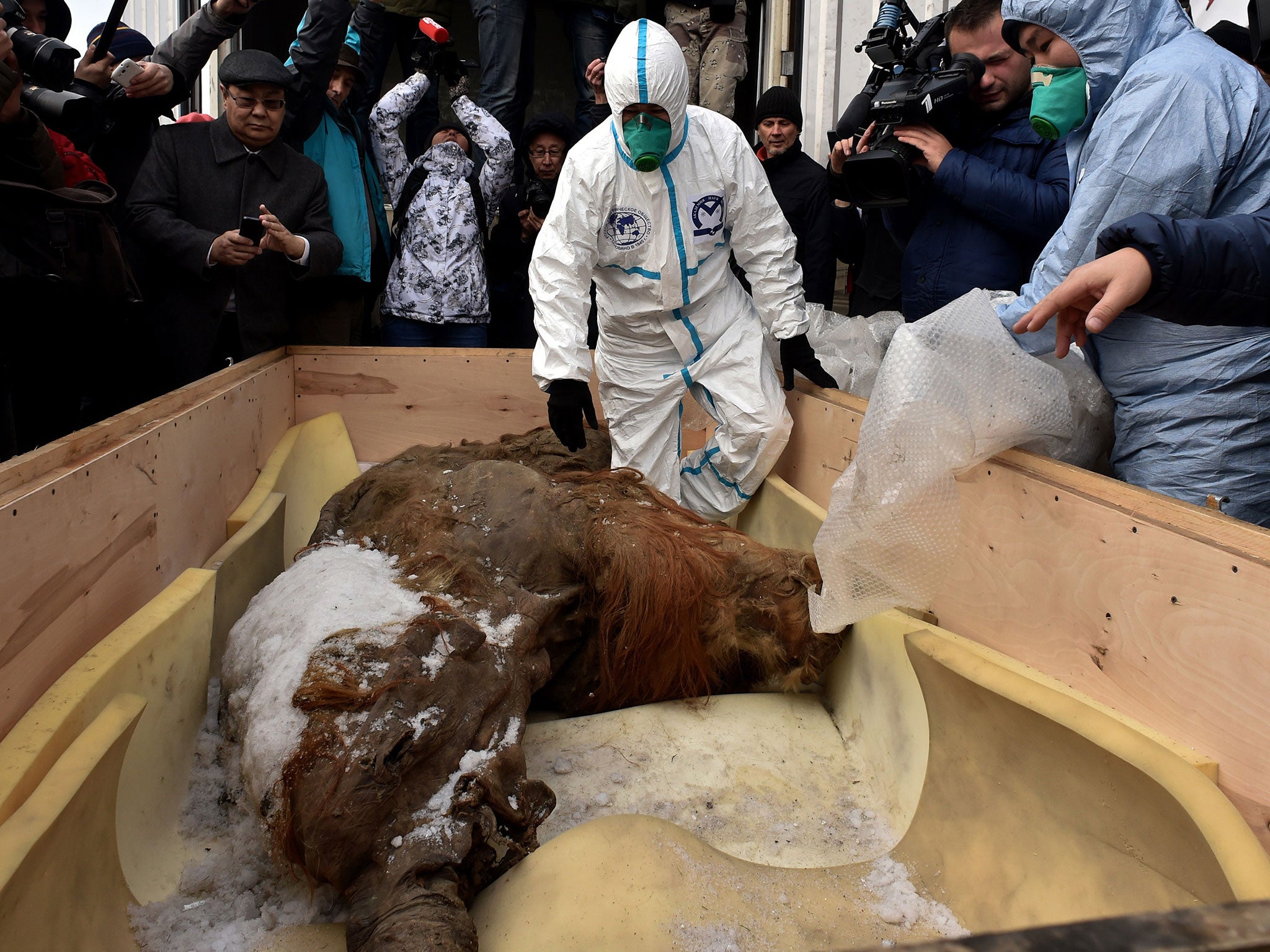39,000-year-old baby mammoth goes on display in Moscow
Video: The ancient carcass was found in 2010 in Russia's far north region of Yakutia

It may be nearly 40,000 years old but the carcass of a young woolly mammoth is in good shape and proudly on display in the Russian capital Moscow.
The mammoth was found in 2010 in the Russian region of Yakutia. Thus, scientists called the carcass Yuka. The mammoth was between six and nine years old when it died.
Yuka's preserved body shows signs that humans hunted for mammoths during the Ice Age, according to researcher Albert Protopopov.
While Protopopov told the Associated Press that Yuka was 38,000 years old, other researchers place the mammoth's age at 39,000.
Yuka was found in brilliant condition in permafrost, which allowed scientists the rare opportunity to study the well-preserved brain of the woolly mammoth.
Reaching up to 13 feet in height, mammoths lived in Russia, northern China, Europe and most of North America before being driven to extinction around 10,000 years ago.
Some researchers have deciphered some of woolly mammoth's genetic code and believe they could clone them if they found some living cells.
However, Protopopov said. "It is not possible to find living cells as they don't survive after tens of thousands years."
Before arriving in Moscow on Tuesday, the baby mammoth had toured Japan and Taiwan. It is on display at an exhibition of the Russian Geographic Union.
Back in May, a 42,000 year old baby mammoth was displayed for the first time in Western Europe. The Natural History Museum hosted the carcass of Lubya, described as the most complete preserved mammoth in the world.
Additional reporting by AP.
Join our commenting forum
Join thought-provoking conversations, follow other Independent readers and see their replies
Comments
Bookmark popover
Removed from bookmarks